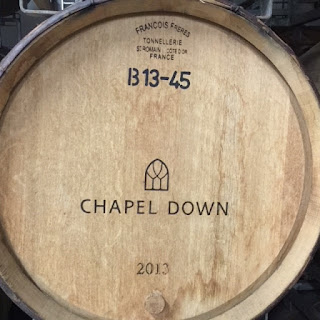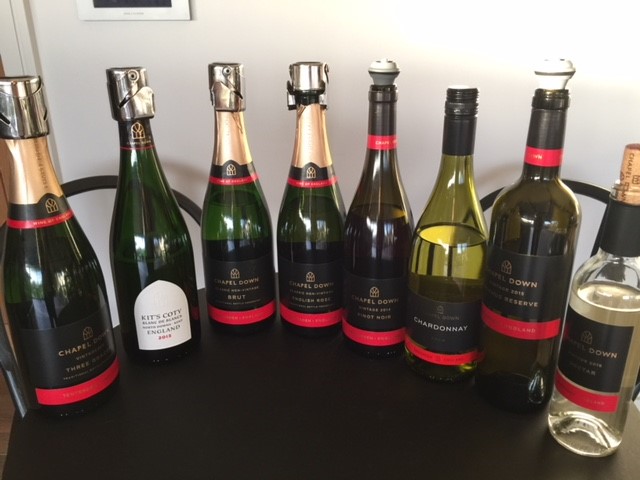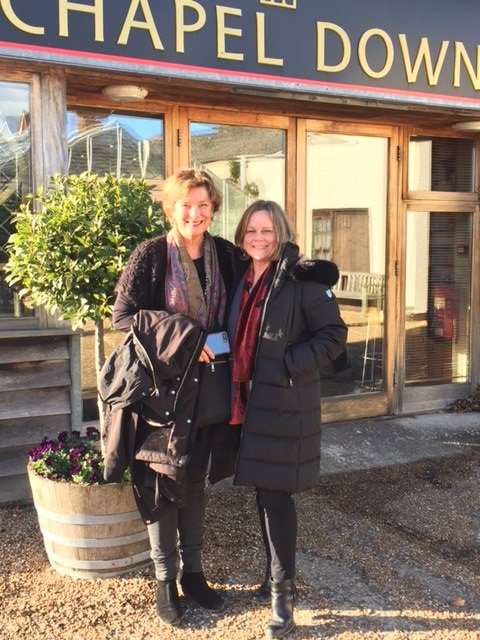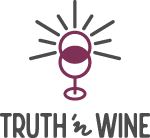 |
| French oak casks are used at Chapel Down |
My recent trip to the U.K. of course included a trip to the wine country in County Kent, about a half-hour train ride southeast of London. In my last post, I talked about my visit to the Gusbourne, a lovely artisan producer of mostly vintage sparkling wine made in the traditional, or Champagne, method. My only other stop was to England’s leading wine producer, about 15 minutes drive from Gusbourne, called Chapel Down.
Located in Small Hythe,Tenterden, the winery is a thriving estate, sporting an 80-seat restaurant (the Swan), a wine and fine food store (we purchased delicious locally made cheese), numerous employees who are available for thorough guided tours (guide Hazel was terrific), and a vine-leasing program that allows wine-lovers to enjoy custom-labelled wines.
 |
| Hazel was a magnificent tour guide and highly skilled taster |
It’s obvious that Chapel Down is a cheerleader for wine production in the U.K., which is on the rise. There are now 450 producers scattered throughout the country, and two-thirds of all production is now traditional-method sparkling. In addition to sparkling, for which it is mostly known, Chapel Down also produces still red and white wine, a line of “Curious” beers, cider, and spirits, including gin and brandy.
Like Gusbourne, Chapel Down is situated in the part of England that has the geology and the climate suitable for producing world-class sparkling wines. The same chalky “Kimmeridgian”soils that nurture the vines in the Champagne and Burgundy regions of France are present in Kent and Sussex counties. This same soil can be seen in the White Cliffs of Dover on the southern coast of England, just 35 miles away from Chapel Down. This marine sediment-based soil is good for Chardonnay, Pinot Noir and Pinot Meunier, the triumverate of grapes that go into Champagne and English sparkling.
 |
| Dormant Bacchus vines on a lovely winter day |
Chapel Down’s version of a classic Champagne-style blend is called “Three Graces,” which displays aromas of ripe apple, red berries, and brioche, and is priced around 29 pounds ($40 U.S.).
 |
| We tasted eight wines at the Wine Sanctuary, a standalone building with gorgeous views |
Chapel Down also has a range of still wines from Chardonnay and Pinot Noir, as well as Bacchus, a German crossing of Riesling x Sylvaner and the the third most-planted wine grape in the U.K., plus Schonburger (aromatic, Muscat-like white), Siegerrebe (intensely aromatic relative of Gewurztraminer), Madeleine Angevine (light, fruity, Muscat-like white), Rondo (red hybrid for blending), and, Albarino (white native to the northern “green” part of Spain). An interesting blend that we tasted was a 2015 Chardonnay-Albarino that tasted of green apple and fresh apricot with flinty notes, which would be a perfect seafood pairing.
 |
| Melanie Webber and Terry Nozick, the WSET Diploma graduates visit Chapel Down |
“English Wine” vs. “British Wine”
And the next time you visit the U.K., consider a trip out to the glorious wine country. You will be glad you did.
Until next time,
Cheers!
